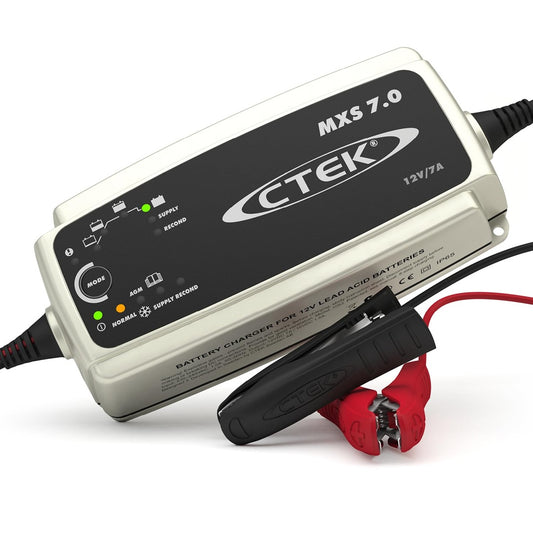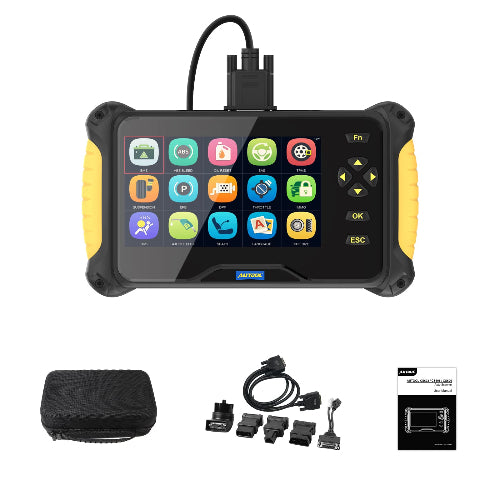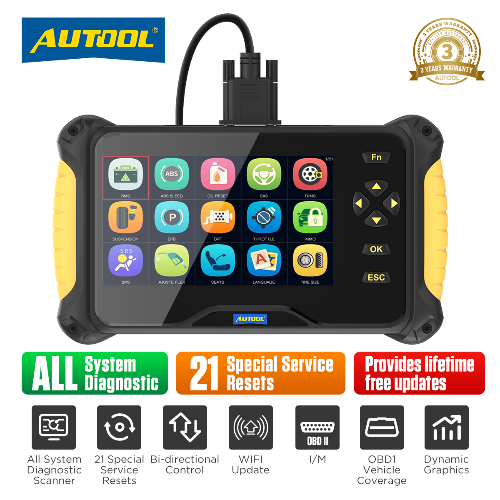
Browse India's Best Vehicle Tools


The Experts in Automotive Tools
Established in 2014 brings to India the Most Reliable Automotive Tool Brands from across the world. Tools designed for both Auto Enthusiasts and Professionals to meet the grwoing demands of today's automotive Industry.
India's Best Battery Chargers for Cars and Bikes
CTEK: Maximizing Battery Performance
Maximizing Battery Performance isn’t just a slogan – it’s right at the heart of everything we do and every product we make. Our mission is to develop and provide the best and safest battery charging on the market based on both innovative and standardised solutions. Our charging solutions are characterised by safety, dependability, and a simple user interface.
-
CTEK CT5 PowerSport – The Best SuperBike Battery Charger in India
Vendor:CTEKRegular price Rs. 11,400.00Regular priceUnit price / per -
CTEK MXS 5.0 – Smart 12V Battery Charger for Cars, Bikes & Supercars
Vendor:CTEKRegular price Rs. 11,400.00Regular priceUnit price / per -
CTEK MXS 10 – The Best Car Battery Charger for Workshops
Vendor:CTEKRegular price Rs. 26,500.00Regular priceUnit price / per -
CTEK Pro 25s 12v 25A Battery Charger and Power Supply with Lithium Support
Vendor:CTEKRegular price Rs. 44,900.00Regular priceUnit price / per -
CTEK MXS 7 – The Best Supercar Battery Charger in India
Vendor:CTEKRegular price Rs. 22,900.00Regular priceUnit price / per -
CTEK MXS 3.8 12V 3.8A Bike and Car Battery Charger
Vendor:CTEKRegular price Rs. 9,100.00Regular priceUnit price / per -
CTEK MXTS 40 12V and 24v 40A Battery Charger and Support Unit
Vendor:CTEKRegular price Rs. 99,000.00Regular priceUnit price / per
India's Most Reliable Battery Testers for Cars and Bikes
High Precision Battery Tester for use with automotive Battery ranging from 6v batteries to 24v Lead Acid Batteries. Available in different ranges for both enthusiasts and Professionals.
-
Foxwell BT 780 12V and 24v Battery Tester with Inbuilt Printer
Vendor:FoxwellRegular price Rs. 19,000.00Regular priceUnit price / per -
Konnwei BK100 Bluetooth Battery Tester (BK100)
Vendor:KonnweiRegular price Rs. 2,900.00Regular priceUnit price / per -
Konnwei KW600 12v Battery Tester for Car, Motorcyle, SUV
Vendor:KonnweiRegular price Rs. 7,900.00Regular priceUnit price / per -
Ultimate Vehicle Battery Care Bundle - CTEK MXS 10 with Autool BT 860
Vendor:CTEKRegular price Rs. 39,000.00Regular priceUnit price / perRs. 43,600.00Sale price Rs. 39,000.00Sale -
KONNWEI KW720 Car Battery Tester 6V 12V 24V with Printer
Vendor:KonnweiRegular price Rs. 15,900.00Regular priceUnit price / perRs. 17,900.00Sale price Rs. 15,900.00Sale -
AUTOOL BT860 Battery Tester
Vendor:AutoolRegular price Rs. 14,900.00Regular priceUnit price / per -
Autool BT360 Battery Tester
Vendor:AutoolRegular price Rs. 5,900.00Regular priceUnit price / per
Latest Technology Jump Starters for Cars and Bikes
Get a high-quality, reliable vehicle jumpstarter in India. Powerful, compact & easy to use—never get stranded with a dead battery again! Buy now for peace of mind.
-
OzCharge RM 1000 Batteryless Jump Starter
Vendor:OzChargeRegular price Rs. 43,600.00Regular priceUnit price / per -
LOKITHOR JA300 Jump Starter
Vendor:LokhithorRegular price Rs. 24,000.00Regular priceUnit price / per -
OzCharge RescueMate 750 Amp Batteryless Jump Starter
Vendor:OzChargeRegular price Rs. 25,000.00Regular priceUnit price / per -
OzCharge RescueMate 500 Amp Batteryless Jump Starter
Vendor:OzChargeRegular price Rs. 24,100.00Regular priceUnit price / per
India's Leading Performance Additives for Cars and Bikes
Rislone is the oldest and most trusted global name when it comes to performance boosting and maintenance of vehicles' engine and internal parts since 1921 now in India
-
Rislone Hy-per Fuel Octane Booster (44747) 177 Ml
Vendor:RisloneRegular price Rs. 800.00Regular priceUnit price / perRs. 800.00Sale price Rs. 800.00 -
Rislone One Seal Stop Leak (44334) 325 Ml
Vendor:RisloneRegular price Rs. 1,275.00Regular priceUnit price / perRs. 1,400.00Sale price Rs. 1,275.00Sale -
Rislone Hy-per Fuel Complete Fuel System Cleaner Petrol (44700) 500 Ml
Vendor:RisloneRegular price Rs. 1,600.00Regular priceUnit price / per -
Rislone Hy-per Fuel Injector Cleaner Concentrate (44701) 177 Ml
Vendor:RisloneRegular price Rs. 600.00Regular priceUnit price / perRs. 800.00Sale price Rs. 600.00Sale -
Rislone 710 Oil Treatment (4471) 443 Ml
Vendor:RisloneRegular price Rs. 1,290.00Regular priceUnit price / perRs. 1,730.00Sale price Rs. 1,290.00Sale -
Rislone Trans Fix (44515) 340 Ml
Vendor:RisloneRegular price Rs. 2,100.00Regular priceUnit price / perRs. 2,400.00Sale price Rs. 2,100.00Sale -
Rislone Heavy Duty Formula Hydraulic Seal (41820) 950 Ml
Vendor:RisloneRegular price Rs. 2,100.00Regular priceUnit price / perRs. 2,300.00Sale price Rs. 2,100.00Sale
India's Reliable OBD Tools for Cars and Bikes
OBD stands for On-Board Diagnostics and is a computer system inside of a vehicle that tracks and regulates a car's performance. This on-board computer system collects information from the network of sensors inside the vehicle, which the system can then use to regulate car systems or alert the user to problems.
-
Konwwei KW350 OBD II (KW350) Scanner Tool
Vendor:KonnweiRegular price Rs. 5,600.00Regular priceUnit price / per -
Konnwei KW206 OBD2 Car Diagnostic Scanner (KW206)
Vendor:KonnweiRegular price Rs. 5,600.00Regular priceUnit price / per -
Konnwei OBDII KW850 ( KW850OBD) Scanner Tool
Vendor:KonnweiRegular price Rs. 4,289.00Regular priceUnit price / per -
Blue Driver Pro Scan Tool (BSPS)
Vendor:Blue DriverRegular price Rs. 15,900.00Regular priceUnit price / per -
Autool CS606 OBD Auto Scanner
Vendor:AutoolRegular price Rs. 49,000.00Regular priceUnit price / per -
Autool CS520 OBD scanner
Vendor:AutoolRegular price Rs. 13,800.00Regular priceUnit price / per
Blog posts
View all-

Stop Searching “Car Battery Charging Near Me”: ...
Tired of searching “car battery charging near me”? Learn how a 12V auto battery charger can help you maintain your battery at home, save money, and avoid breakdowns. Discover expert...
Stop Searching “Car Battery Charging Near Me”: ...
Tired of searching “car battery charging near me”? Learn how a 12V auto battery charger can help you maintain your battery at home, save money, and avoid breakdowns. Discover expert...
-

The Solution for Clogged Fuel Injectors: RISLON...
Fuel injectors are critical components that deliver the right amount of fuel to your engine for efficient combustion. Over time, injectors can become clogged, causing poor fuel economy, reduced performance,...
The Solution for Clogged Fuel Injectors: RISLON...
Fuel injectors are critical components that deliver the right amount of fuel to your engine for efficient combustion. Over time, injectors can become clogged, causing poor fuel economy, reduced performance,...




























































